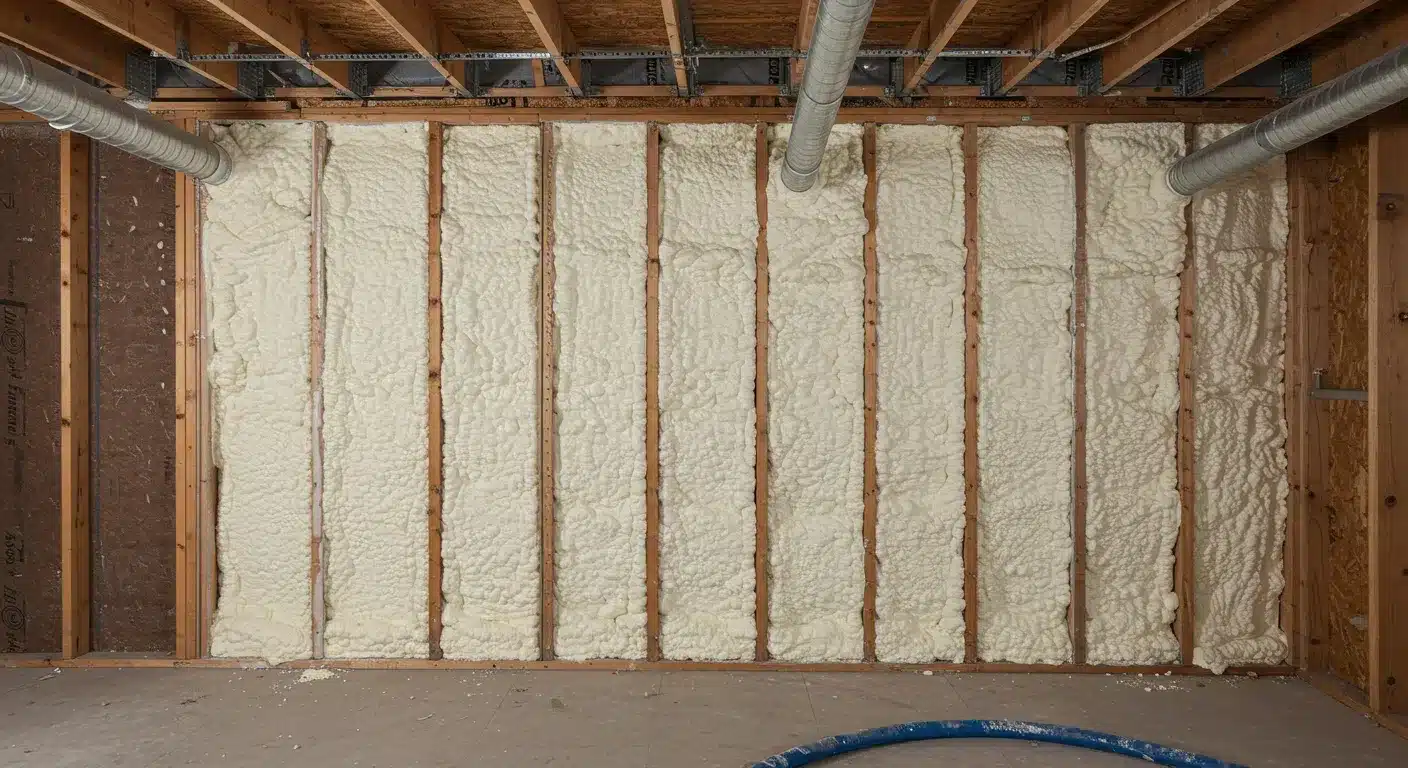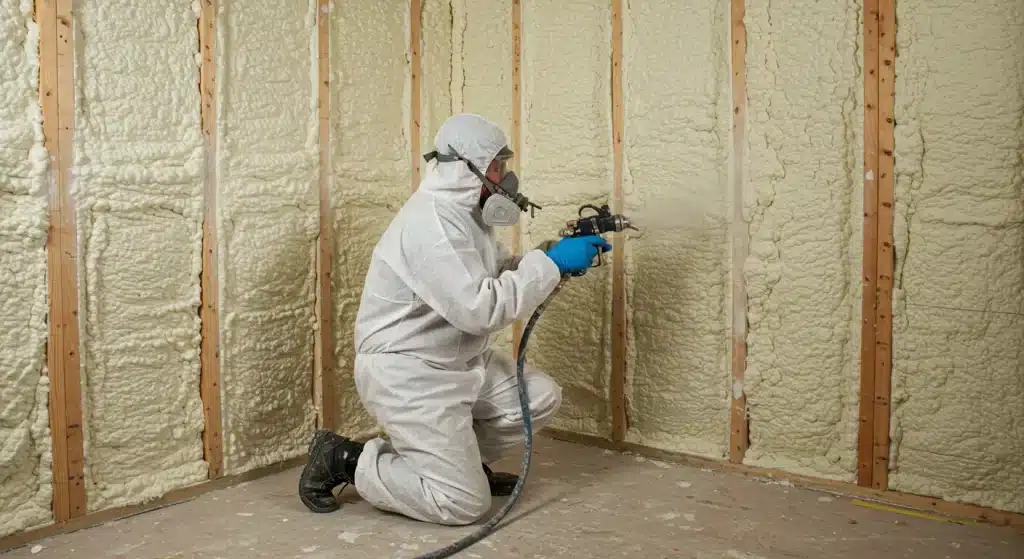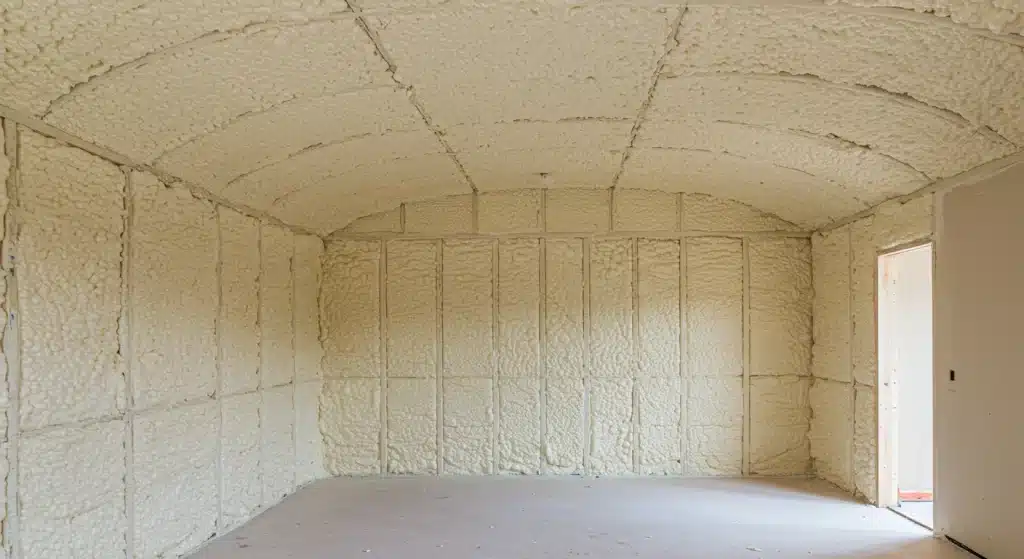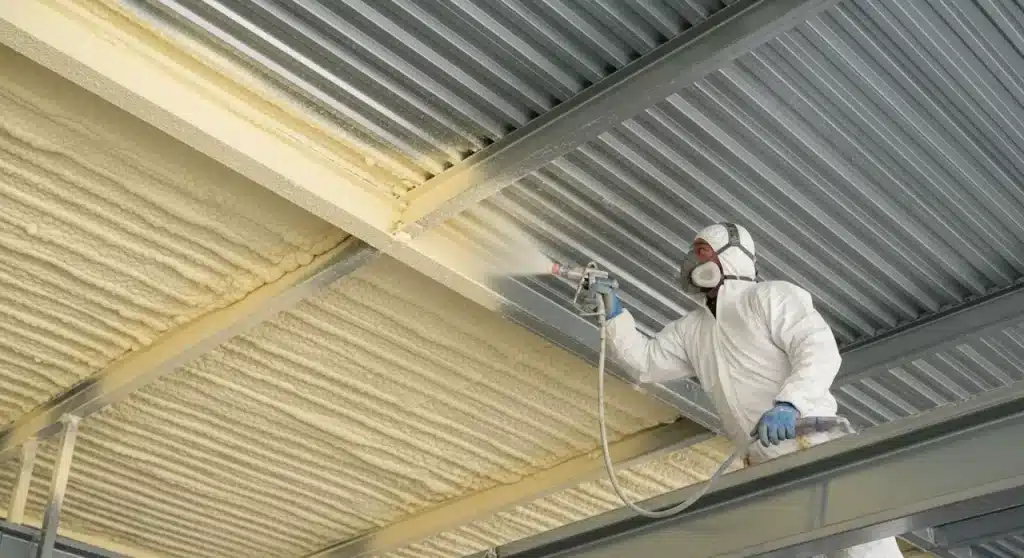Spray foam insulation stands out as a safe option for most homes and buildings when professionals install it correctly. This material seals air leaks effectively and provides strong thermal performance, but issues arise if workers skip safety protocols or use low-quality products. Proper application minimizes health risks like chemical exposure during installation, and long-term use shows no major concerns for indoor air quality.
This article breaks down the benefits, risks, and practical safety tips to help readers make informed choices. Information draws from hands-on work in Las Vegas installations, where hot desert conditions test insulation durability daily. Readers gain clear guidance on what works best in arid climates.
Benefits of Spray Foam Insulation
Beyond safety, spray foam offers several key advantages that make it ideal for energy efficiency. Spray foam creates an airtight barrier that blocks heat and cold from entering structures. In places like Las Vegas, where summer temperatures often top 100 degrees Fahrenheit, this insulation keeps interiors cooler and reduces air conditioning demands. Homeowners notice lower utility bills right away, with average savings reaching 10-15% on energy costs according to the U.S. Department of Energy.
The material expands to fill gaps around pipes, wires, and irregular spaces that fiberglass batts often miss. This full coverage prevents moisture buildup, a common problem in humid areas, though it’s equally helpful in dry regions to maintain consistent temperatures. Spray foam also adds structural strength; it reinforces walls against wind or minor impacts, which proves useful during occasional desert dust storms.
Market data highlights its popularity. The global spray foam insulation market hit $1.8 billion in 2022 and projects growth to $2.5 billion by 2027, driven by demand for energy-efficient building materials, as reported by Grand View Research. In the U.S., about 20% of new homes use spray foam, up from 10% a decade ago, showing trust in its performance.
Bonus Tip
Check attic ventilation before installation. In hot climates, pair spray foam with ridge vents to avoid trapped heat buildup, which extends the roof’s life.
Potential Risks and How to Mitigate Them
During installation, spray foam releases chemicals like isocyanates that irritate eyes, skin, and lungs if inhaled. Workers must wear respirators and full-body suits, but occupants should leave the area until the foam cures, usually 24 hours. Once set, the foam itself poses little risk; studies confirm it does not off-gas harmful levels over time.
Poor installation leads to other problems. If applicators use too much foam, it can block vents and cause moisture traps, leading to mold in cooler seasons. In Las Vegas’s dry air, this risk drops, but over-expansion still happens if crews ignore manufacturer guidelines. Fire safety counts too; untreated spray foam burns quickly, so add fire-retardant coatings where codes require them.
A study by the EPA notes that proper curing eliminates most chemical concerns, with air quality tests showing safe levels after one day. Allergic reactions remain rare, affecting less than 1% of users post-installation.
Bonus Tip
Test for existing mold before applying foam in older homes. Remediation first prevents hidden issues from worsening under the seal.
| Insulation Type | R-Value per Inch | Air Sealing Ability | Cost per Sq Ft | Best for Hot Climates |
|---|---|---|---|---|
| Spray Foam (Closed-Cell) | 6-7 | Excellent | $1.50-$3.00 | Yes, seals heat effectively |
| Fiberglass Batts | 3-4 | Poor | $0.50-$1.50 | No, allows air leaks |
| Cellulose | 3.5-4 | Good | $1.00-$2.00 | Moderate, needs dense packing |
This table compares common options, showing spray foam’s edge in sealing and efficiency for desert heat.
Safety Tips for Installation and Use
Building on these mitigations, here are essential tips for ensuring safe installation and long-term use. Hire certified installers who follow guidelines from the Spray Polyurethane Foam Alliance. They check equipment daily and monitor temperature and humidity to ensure even curing. In Las Vegas, aim for installations during milder months to avoid rapid expansion from extreme heat.
After setup, inspect seals around windows and doors annually. Small cracks form over time from settling, and resealing keeps performance high. Keep foam away from direct heat sources like chimneys to prevent degradation.
For ongoing safety, ventilate spaces well during the first week post-installation, even though off-gassing drops quickly. Pets and children should stay out until cleared by pros.
Bonus Tip
Use low-VOC paints over exposed foam in basements. This layer adds protection against minor wear while maintaining air quality.
Things to Consider Before Making a Decision
Assess home age and layout first. Older structures with asbestos need abatement before any insulation work to avoid health hazards. Budget plays a role; spray foam costs more upfront but pays back through savings.
Local building codes in Clark County require permits for major insulation jobs, so review those early. Climate matters too—in dry Las Vegas, focus on cooling efficiency, but calculate long-term ROI based on utility rates, which average $0.12 per kWh here.
Energy audits reveal weak spots. Professionals use infrared cameras to spot leaks, guiding targeted application without over-insulating.
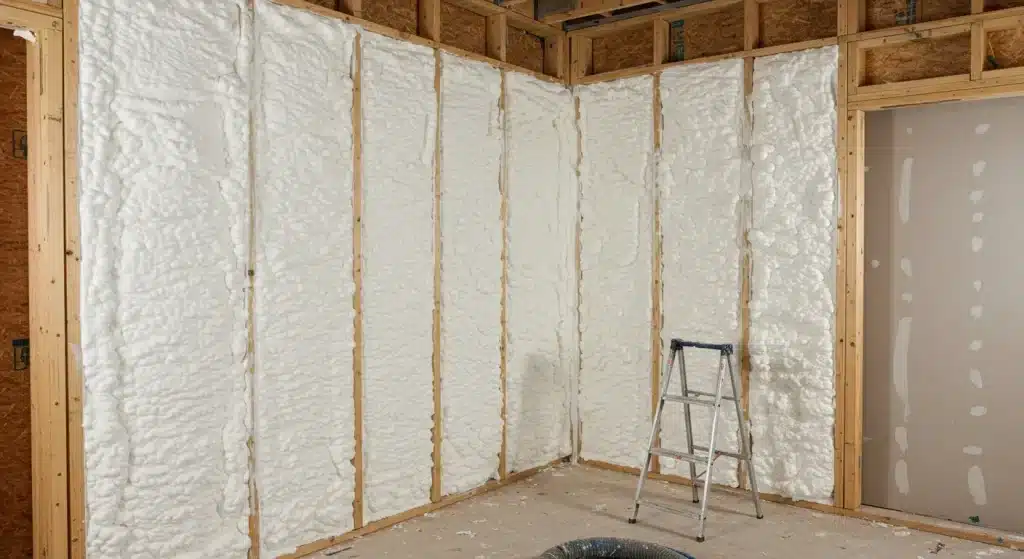
Common Questions
Are DIY spray foam kits worth it?
DIY kits are best for very small areas. They lack the precision of professional tools, which can result in uneven coverage and wasted material. For full projects, professional installation is more reliable.
What is the environmental impact of spray foam insulation?
Spray foam is made with petroleum-based chemicals, but closed-cell versions offer strong water resistance and energy efficiency. Over time, this reduces overall building energy use and carbon footprint.
Frequently Asked Questions About Spray Foam Safety
Does spray foam cause long-term health issues?
No, once cured, it does not release harmful chemicals into the air. The American Lung Association states that indoor levels stay below safety thresholds after proper installation.
Can spray foam be removed if needed?
Removal requires specialized tools to avoid dust spread. Pros cut it out in sections, a process that takes days but prevents structural damage.
Is open-cell or closed-cell foam safer?
Both prove safe when installed right, but closed-cell offers better moisture resistance, ideal for humid spots. Open-cell breathes more, suiting dry areas like attics in Las Vegas.
How does temperature affect safety during install?
High heat speeds curing but risks over-expansion. Installers adjust mix ratios above 85 degrees Fahrenheit to maintain control.
Will spray foam attract pests?
It deters insects and rodents due to its dense structure, unlike cellulose which they sometimes nest in.
Key Takeaways
Spray foam insulation delivers strong benefits like energy savings and air sealing, especially in hot climates, while risks stay low with proper handling. Focus on certified installation and regular checks to maximize safety. Evaluate home needs, local codes, and long-term costs to decide if it fits specific goals.
Next Steps for Better Insulation
Explore options tailored to local conditions. Contact Supreme Spray Foam LV at (702) 904-9895 or email [email protected] for guidance on assessments. Schedule a consultation to review setup details and ensure compliance with area standards. This step clarifies fit without commitment.
Sources
- U.S. Department of Energy – Government resource on insulation types and energy savings data.
- Grand View Research – Market analysis report detailing industry growth and adoption statistics.
- EPA – Environmental Protection Agency guide on spray foam health and installation safety.

